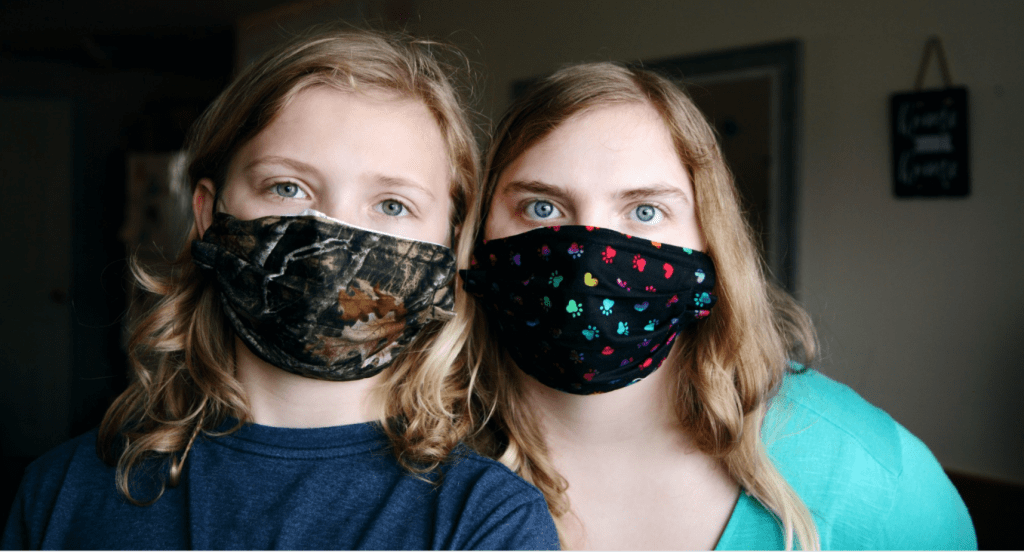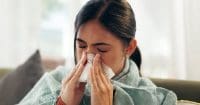Elementary school nurse, Anne Young, created a series of videos for her students and parents to help reduce the stress and disruption of COVID-19. Nurse Young’s Corner is a delightful collection of informative videos that translate the ever-evolving pandemic information families are grappling to understand. Look for Nurse Young’s “magic box,” something that all school nurses need in our health offices!


Explaining COVID-19 to Children And Helping Them Overcome the Fear of Face Masks
It all began with a simple trip to the grocery store. It was my first time in public since my region went on lockdown due to the coronavirus, and I quickly discovered this formerly routine trip was anything but simple. Since I had some illness symptoms, I had placed myself on a strict quarantine and had not left the house for 17 days.
Do you remember that sense of the zombie apocalypse the first time you ventured out on the nearly empty streets? Deserted parking lots. Businesses shuttered. I had seen some news footage and felt somewhat prepared for that.
What I was not ready for was seeing people in face masks.
As I got out of my car, I dutifully put on my face mask and headed into the grocery store. Masks were not required but strongly encouraged then. I had read enough to know the benefits of protecting others by wearing a mask. As a nurse, I had been accustomed to wearing surgical masks for certain clinical situations when one was warranted. However, I had never worn one in public as a citizen shopping for groceries.
It was so unnerving as I entered the store and encountered strangers with their faces half covered. The fear in the eyes of others was more pronounced since it was the only part of their face I could see. Those who were not wearing masks looked skeptically at those who did. So much about the virus and its transmission was still unknown.
Nervous adults, worried children
My thoughts turned to my young elementary students whose worlds were turned upside down in recent weeks. As we adults were floundering and panicking and wondering how to manage this seismic shift in our daily existence, our young children were hunkered down at home, isolated from their friends, teachers, and extended family.
The growing ubiquity of face masks was one more layer of confusion for them.
As their school nurse whom they were accustomed to seeing daily, I was yet another person they were no longer interacting with. I had no virtual classroom. I was busy helping families in need to obtain food and necessities, yet I longed to see my students.
Parents were doing their best to survive each day, becoming teachers overnight in addition to working from home. There were plenty of articles and links to resources on talking to your kids about COVID-19, but as a worn-out working mother myself, the last thing I wanted was to have something else to add to my already overflowing plate.
Who had time to even read up on these resources? I was too consumed with assisting three children learning remotely while simultaneously working full time. My family needed a spreadsheet just to coordinate all of our virtual meetings!
Creating a video
I decided that if I created a video, the students could at least see me and find some reassurance from a familiar face. And their parents could watch it with them and the video could provide a springboard for conversations about a difficult topic.
Yet I knew nothing about making videos! I also prefer to be behind the camera rather than in front of it. However, the concept kept hounding me so I decided to move forward and develop a plan. I did a ton of research and plenty of trial and error before posting to YouTube.
After hitting that upload button, I held my breath and had a mini panic attack as I realized my creation was now up for worldwide public scrutiny.
I had given a lot of thought not only to my messaging but capitalizing on the advantages a video brings versus a poster or written story. I could demonstrate how the mask hides my smile. I would dress up in PPE (personal protective equipment) to illustrate that it is still me hiding underneath an outfit that children may find frightening.
More than just stating facts and spouting out information, I wanted to reach the hearts of children in addition to enlightening their minds.
First, it is so important to allow children to feel their feelings. It is tempting to want to shield them from the scariness of this global pandemic — and of course, we should limit their access to news stories and such.
But to tell children everything is fine denies them the opportunity to acknowledge the reality that they recognize in their gut.
Children are so perceptive and absorb much more than we give them credit for. So at the beginning of the video, I give children the space to notice what they may be feeling.
With my audience being 5–10-year-olds, I embraced the challenge of meeting them in their varying developmental stages. Enter my magic box! The element of surprise and the wonder of just how that hand appears keeps children of all ages captivated.
Then, with so much misinformation about COVID-19 circulating, I give some simple facts about the virus, using images and language children can understand. I even had parents tell me they learned a few things that they did not know before watching my video!
And finally, I empower children with concrete actions they can take. This moves them from the feeling of powerlessness to the feeling of being able to make a difference. Even at a young age, a child can be a superhero against the virus and spread kindness instead of spreading germs!
I end the video, as I do all my subsequent videos, with a joke. I remind kids that laughter is the best medicine!
Even in difficult circumstances, the release of a good laugh can offer tremendous healing.
Here is the video:
This message resonated with children and parents in very powerful ways.
The mother of one of my anxious kindergarteners told me that her daughter spent the rest of the day talking about how she can be a superhero against the virus.
A former colleague shared the video with a child she worked with who had had a fear of face masks for several years; after watching the video, she put on her face mask and went to her doctor’s appointment. Her mother cried tears of gratitude.
I share these two anecdotal stories to illustrate what can happen when we allow children to feel their feelings and then offer them the opportunity to take action and turn those feelings into a positive experience.
This pandemic is not going away anytime soon, and we must continue to listen to our children and be a loving and reassuring presence for them.



Robin Cogan, MEd, RN, NCSN is a Nationally Certified School Nurse (NCSN), currently in her 19th year as a New Jersey school nurse in the Camden City School District. She serves on several national boards including The American Foundation for Firearm Injury Reduction in Medicine (AFFIRM), a gun violence prevention research non-profit organization and the National Board of Certification for School Nurses (NBCSN). Robin is the Legislative Chair for the New Jersey State School Nurses Association (NJSSNA). She is proud to be a Johnson & Johnson School Health Leadership Fellow and past Program Mentor.
She has been recognized in her home state of New Jersey and nationally for her community-based initiative called “The Community Café: A Conversation That Matters.” Robin is the honored recipient of multiple awards for her work in school nursing and population health. These awards include 2019 National Association of School Nurses (NASN) President’s Award; 2018 NCSN School Nurse of the Year; 2017 Johnson & Johnson School Nurse of the Year; and the New Jersey Department of Health 2017 Population Health Hero Award. Robin serves as faculty in the School Nurse Certificate Program at Rutgers University-Camden School of Nursing, where she teaches the next generation of school nurses. She was presented the 2018 Rutgers University – Camden Chancellor’s Teaching Excellence Award for Part-time Faculty.
Robin writes a weekly blog called The Relentless School Nurse. You can also follow her on Twitter at @RobinCogan.



















